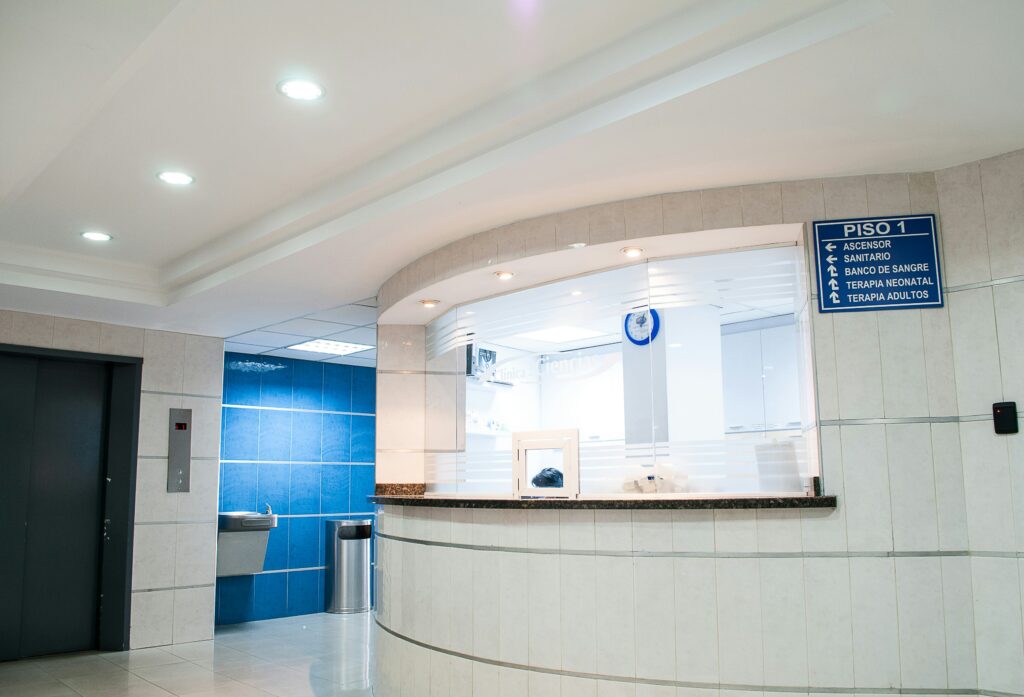More healthcare facilities are turning to building automation to progress the development of their sustainable energy practices. How does this technology outperform the rest when it comes to power conservation?
Why Are Health Care Decision-Makers Automating?
Many industry decision-makers are beginning to leverage building automation technologies for sustainable energy practices. One of the main drivers of this trend is their commitment to the Biden-Harris Administration’s pledge to halve the country’s greenhouse gas emissions by 2030.
Dozens of organizations, including the nation’s largest private health companies, signed the pledge in 2022, meaning hundreds of hospitals and providers are now committed to reducing their emissions by 2030 — and becoming net-zero by 2050. The move makes sense, considering the industry produces 8.5% of all greenhouse gases in the United States.
Adopting sustainable energy practices is one of the most significant priorities. Hospitals are often the most resource-intensive buildings in a community because of their size, equipment complexity and around-the-clock operations. Healthcare facilities account for 10.3% of the total commercial energy consumption in the United States.
The Importance of Building Automation
Building automation plays a crucial role in the adoption of sustainable energy practices. Without automated control systems, the complex web of equipment healthcare facilities rely on would act as a splintered set of tools instead of a single, cohesive unit, making optimization less likely.
Even if healthcare facilities possess the latest and greatest energy-efficient technologies, they can only minimize their power consumption with an automated management system since it can proactively respond to changing environmental conditions and equipment data.
While facility administrators can technically automate building processes with a combination of cloud storage systems, Internet of Things devices and artificial intelligence, maintaining such a complex network would be complicated. Moreover, having more tools would draw more power — the opposite of what they’re trying to achieve.
How Building Automation Contributes to Energy Savings
The main way building automation systems contribute to sustainable energy practices in health care is through data-driven insights. The centralized aggregation and analysis of sensor information enables an accelerated response time and helps decision-makers identify pain points they were previously unaware of.
Building automation systems can minimize energy usage by measuring and optimizing indoor environmental parameters like humidity, air temperature and ventilation. According to an older study, commercial buildings could achieve energy savings of 29% on average — regardless of their location’s climate — by implementing such control measures.
These systems can significantly lower healthcare facilities’ power consumption and waste. According to one industry expert, after building automation system implementation, they could achieve 5%-15% total energy savings. Over time, these incremental efficiency gains add up.
Automation-Based Energy Conservation Solutions
Healthcare facility decision-makers should consider integrating these energy-saving solutions into their building management automation systems.
- Automated Blinds
At face value, adding electronic window coverings might seem like an unnecessary resource drain. However, they can help healthcare facilities regulate internal air temperature, reducing the strain on other systems.
- Sleep Mode
While medical systems must be accessible immediately, many healthcare facilities overlook their potential for energy savings. By using a building automation system to put relevant equipment into sleep mode when inactive, they’ll reduce their energy consumption.
- Smart Lighting
While most healthcare facilities have adopted energy-efficient solutions like LED lights, many have yet to embrace automation. In standard commercial settings, they can result in energy savings of up to 94% compared to manual control systems.
- Sun-Tracking Solar Panels
Sun-tracking solar panels adjust themselves automatically to align with the sun’s rays, maximizing their energy output. If hospitals leverage these renewable power sources and utilize batteries for storing excess, they can drastically improve their energy conservation efforts.
The Benefits of Leveraging Building Automation
The main advantage of leveraging building automation for sustainable energy practices is diminished greenhouse gas production. Occupancy, activity and motion-triggered devices controlled by a dynamic management system use fewer resources, lowering direct emissions.
Aside from the sustainability benefits, one of the main advantages of leveraging building automation is reduced operating costs. Dynamic temperature, ventilation, and lighting adjustments can substantially lower facilities’ cooling, heating and electricity costs.
Hospitals can raise patient comfort and satisfaction by utilizing automation. Research shows patients who visited green hospitals — meaning buildings with sustainable practices — had a 3.6% higher satisfaction rating and were 5.6% more likely to recommend the facility to others.
Automated building systems can improve patient safety by dynamically adjusting temperature, pressure and humidity to prevent mould growth and discourage bacteria proliferation, potentially lowering the number of secondary infections.
Ultimately, health care facilities that leverage this technology can enjoy the benefits of automation and sustainability. They may see even greater returns as they continuously refine and upgrade their systems after implementation.
The Energy-Saving Potential of Building Automation
Building automation technology can help healthcare organizations keep their commitment to halve their greenhouse gas emissions by 2030. More importantly, it can help progress the industry toward a more efficient, affordable future.
The implications of widespread building automation adoption are significant. As patient satisfaction increases, operating costs lower, and administrators save more time. Patient outcomes could improve, and visits may become more affordable. Ultimately, only time will tell how this technology impacts the industry.



